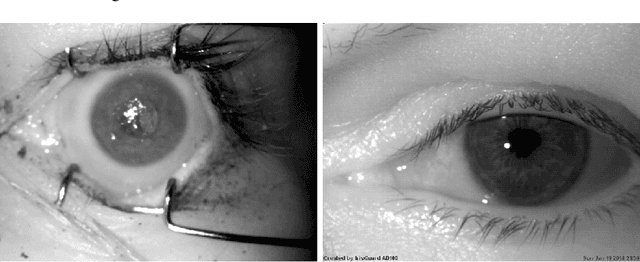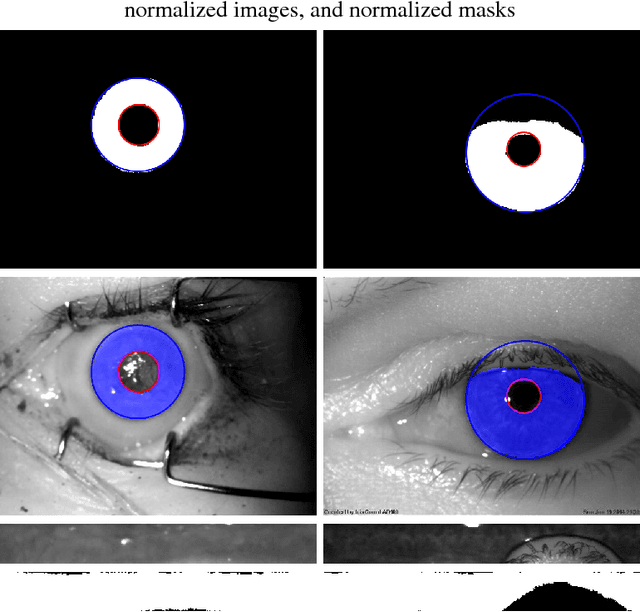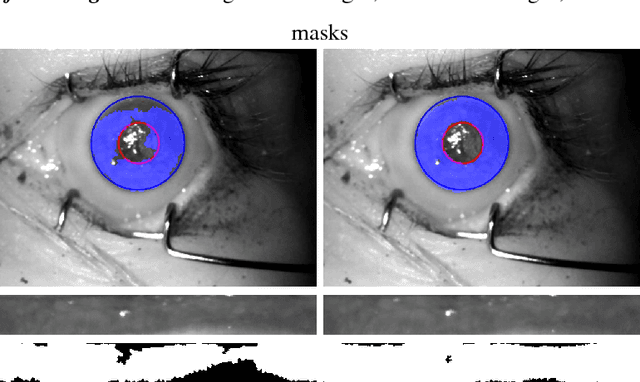Post-mortem Iris Recognition with Deep-Learning-based Image Segmentation
Paper and Code
Jan 07, 2019



This paper proposes the first known to us iris recognition methodology designed specifically for post-mortem samples. We propose to use deep learning-based iris segmentation models to extract highly irregular iris texture areas in post-mortem iris images. We show how to use segmentation masks predicted by neural networks in conventional, Gabor-based iris recognition method, which employs circular approximations of the pupillary and limbic iris boundaries. As a whole, this method allows for a significant improvement in post-mortem iris recognition accuracy over the methods designed only for ante-mortem irises, including the academic OSIRIS and commercial IriCore implementations. The proposed method reaches the EER less than 1% for samples collected up to 10 hours after death, when compared to 16.89% and 5.37% of EER observed for OSIRIS and IriCore, respectively. For samples collected up to 369 hours post-mortem, the proposed method achieves the EER 21.45%, while 33.59% and 25.38% are observed for OSIRIS and IriCore, respectively. Additionally, the method is tested on a database of iris images collected from ophthalmology clinic patients, for which it also offers an advantage over the two remaining methods. This work is the first step towards post-mortem-specific iris recognition, which increases the chances of identification of deceased subjects in forensic investigations. The new database of post-mortem iris images acquired from 42 subjects, as well as the deep learning-based segmentation models are made available along with the paper, to ensure all the results presented in this manuscript are reproducible.
 Add to Chrome
Add to Chrome Add to Firefox
Add to Firefox Add to Edge
Add to Edge